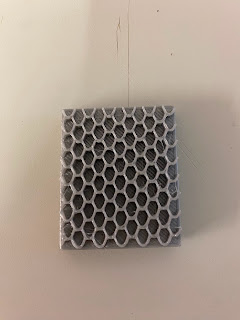Rachel Carter
Rachel Carter
Background
Rachel was born in Langley Mill in Nottingham and first studied at a Catering school before realising her passion for art. She transferred careers, starting with AS and A levels in Fine art, before doing Foundation Studies in Fine Art, and then a BA Hons Degree in Applied Art and Design at the University of Derby.
Due to restarting her education as an artist later on than most university students, she already had a family and house to care for on top of her studies. Despite this, she quickly started her own business (making sculptures), and despite her backup plan, she quickly gained success and out-earned her husband within five years.
Professional
Rachel uses many textile techniques such as weaving, braiding and knotting and applies them to other medias, for example, steal and willow. She started making her sculptures by welding steel bars together, bending and contorting them into smooth rhythmic shapes for a base form, and weaving willow over the top to create an organic shape using inorganic materials and methods. After using these materials for a while she moved away from using natural resources such as willow, because over time, they would naturally decay and the piece wouldn't last very well. She upgraded to casted Bronze, using her own wax weaving method that she developed from an already existing art form.
Lost-Wax process
The lost-wax process (cire-perdue) is a method to reproduce an original sculpture accurately with materials that may be hard to achieve the shape by other methods. It involves creating a sculpture of out wax, casting it into a mould, then during molten metal into the mould. This process allows you to create intricate and delicate structures out of many medias.
- Create a model in wax. First make your design using your wax of choice and shape it using texturing tools, soldering iron and a heat gun. Much like other casting processes, shrinkage may occur when finished, so any small, intricate designs may be lost.
- Make your mould. A mould is often made from a combination of plaster, silica and water. Plaster gives the mould support and silica has a high refractory (can withstand a high heat).
- Remove the wax. For small moulds, you can remove the wax by melting it in short bursts in a microwave but for big projects like Rachels, a kiln can achieve the same.
- Pour in molten metal. Melt the bronze and pour it into the mould cavity. For bigger castings you may need a group of people to help heat the metal and to transfer it into a ladle before pouring.
- Release the cast from the mould. Once the metal has cooled and solidified, quench the plaster in water to break away the mould.
- Finish. Once removed from the mould, file and polish the cast to create the desired finished product.





Comments
Post a Comment